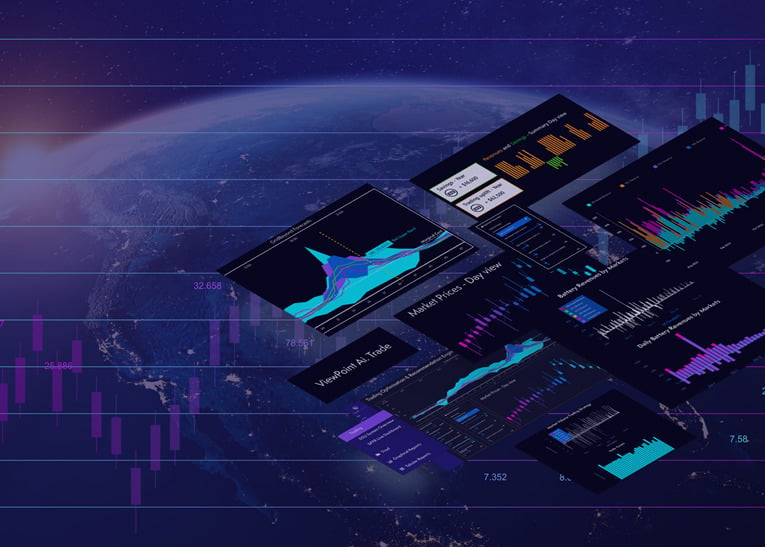
Energy-Storage.news Premium speaks with Michael Phelan, CEO of energy management solutions provider GridBeyond, following its closing of a €52 million (US$55.53 million) Series C funding round.
The Ireland-headquartered company uses its artificial intelligence-driven software platform to optimise and monetise energy assets, adding them to its Grid Edge Virtual Power Plant, or in the case of large-scale battery energy storage systems (BESS), serving as route-to-market provider.
Enjoy 12 months of exclusive analysis
- Regular insight and analysis of the industry’s biggest developments
- In-depth interviews with the industry’s leading figures
- Annual digital subscription to the PV Tech Power journal
- Discounts on Solar Media’s portfolio of events, in-person and virtual
Or continue reading this article for free
With assets under management in leading markets as diverse as the UK, Ireland, Texas’ ERCOT and other deregulated US markets, the company is using the new investment to both enhance its technology and bolster its ongoing expansion into new markets that include Australia and Japan.
GridBeyond counted technology companies ABB and Yokogawa Electric among new entrants into its investor community along with others including utility Constellation Energy and energy and sustainability investor Energy Impact Partners, in the recently-closed Series C funding round led by KLIMA, the sustainability fund of asset manager Alantra.
Phelan speaks in a wide-ranging interview about GridBeyond’s secret sauce for distributed energy resources (DERs) aggregation, how it amassed battery storage expertise through a focus primarily on behind-the-meter (BTM) commercial and industrial (C&I) assets, and how the new investors add technological capabilities and geographical reach.
Energy-Storage.news readers may be familiar with the company already from its sponsored webinars with the site, which have included discussions of front-of-the-meter battery storage optimisation in ERCOT, and in the UK market, as well as the company’s technical paper on optimising BESS in the US’ two leading markets: ERCOT and California’s CAISO for our quarterly journal, PV Tech Power (Vol36).
The company is “very much investing in the energy transition,” Phelan says, putting in place its platform to enable 24/7 matching of renewable energy generation to consumption, “putting battery storage in an optimal way into all available markets,” and through traditional demand response, either offering those things directly to customers or in partnership with energy retailers or utilities.
As one of GridBeyond’s co-founders, we thought it sensible to ask first off how Michael Phelan would define GridBeyond and its activities in the storage space and beyond.
We optimise storage assets, mainly batteries and flexible assets, mainly industrial and commercial assets with storage, and we put them basically into all available markets.
So we would look at, in any [given] market: have we access to the wholesale markets? The day-ahead, the intraday, the imbalance markets, the reserve markets, and the frequency markets. If there are local distribution system operator (DSO) markets, we would look at those as well and then we would place assets as appropriate into all of those markets, and trade them in time, to maximise the value that we can get from those assets.
That’s assuming we’re only working for optimisation of batteries. If it’s [also] energy transition, if we’re working with somebody who’s doing corporate PPAs, and is as much interested in 24/7 power matching as maximising completely the value of batteries, we will also look at it from that perspective. We would look at, say, capturing excess solar, or wind, whatever it be, putting that in the battery and making that available at the appropriate time, when it makes sense from an economic point of view.
It’s an AI-backed software platform that enables this stuff to all happen. Is that something that was developed in demand response, or in another specific market, and adapted outwards to meet other technologies? In other words, what are the brains behind those optimisation plays?
We have fairly decent knowledge in terms of batteries: battery science, understanding the marginal cost of batteries, understanding the depth of discharge, and associated marginal cost.
We’re actually mapping it [that knowledge] back into demand response. So we said, ‘batteries are a particular type of asset with a particular set of constraints and characteristics and we can optimise that from an economic point of view’. Or we could also economically optimise other things: we can optimise industrial loads of various types, we can optimise CHPs, we can optimise long-term storage (aka long-duration storage) when that becomes available.
We can optimise various systems using a similar set of parameters. A lot of it is pricing and forecasted pricing, and then putting a true mathematical solver system, or reinforcement learning, or a combination [of the two] and trying to come up with the best possible trades.
Using software with human oversight is kind of our approach. A lot of trading to date has been done by humans, with a small amount of software input. We’re almost coming at it from the other side.
We realised that especially for smaller assets, it’s not possible to have a human [trading] on every asset. We’ve kind of turned it on its head a little bit and said: ‘if we’re trading lots and lots of small batteries, we’re trading lots and lots of small systems, eventually EVs and various things, we need to be able to turn them into useful blocks of power that can be traded by software, which human oversight, and maybe the software acting as a fairly strong co-pilot in terms of making all those trades.
‘Robotically trading, with human oversight’
In terms of proving out that strategy to potential customers, what are the sorts of things you show them, and what are the metrics on which you would expect customers to judge GridBeyond?
We’ll be targeting a lot of ‘smaller’ batteries, say under 50MW. We still do trading of a lot of batteries above that point as well, but we think the robotic systems are needed more below that point.
We would probably be the largest aggregator of distributed batteries below that 50MW point in the UK and Ireland. We gather a lot of small batteries, and we put them together, and then we’re looking at basically robotically trading those with human oversight.
I think many people may be underestimating the commercial and industrial market for batteries because it’s easy to get excited about the growing demand for large-scale BESS that can be 100MW or more per asset. It sounds like GridBeyond sees a lot of untapped power and potential for these kinds of orchestrated virtual power plants of behind-the-meter assets?
…and more revenue streams as well when the FTM market all caps out.
There’s a danger the front-of-the-meter, very large batteries will overbuild, and if they do, they will have access to a lot less revenue streams than the smaller behind-the-meter batteries that can solve local grid constraints, which obviously can avoid demand charges, which can help customers with tariffs and various things. Even if the overall market is struggling a little bit, that aspect of the market has access to more capital and more revenue streams, so it is, therefore, more valuable.
It must not be that easy to close out a Series C, and to attract some strategic and well-known investors. What does the new financing mean for GridBeyond, starting with its energy storage activities but also in terms of the company’s wider offerings?

A lot of it is targeted at the use of AI for energy storage, energy flexibility and the energy transition. We’re looking across all three areas. A lot of it is to further enhance the products so that we can make all markets available to the products that we have in that market.
Traditionally, demand side response (DSR), for example, would be put into one market, maybe capacity. We’ve changed that in the UK and started to bring people into other markets. Now, we can bring those DSR assets into every market, and that will include BTM batteries.
So, that’s very much direction of travel we’ve seen. We kind of do the same for EVs. EVs are effectively batteries on wheels, and so we are looking at vehicle-to-grid (V2G) in, say, the UK and US and seeing how they can be optimised in that way.
From a technology point of view, we’re continuing to develop the platform so that we can handle it in a co-pilot, almost robotic, way all assets that are available to us. Forecast everything that needs to be forecasted, and then optimise everything.
The other side of it, then, is, obviously, the markets. We have a very strong position in the UK and Ireland, we’re probably the market leader for distributed assets, and we’re looking to continue developing into those new areas, especially the energy transition. Then we’re also moving to grow the team and grow the capability in the US, in all the deregulated markets and even some of the regulated markets. We’ve already got some contracts there, and the same in Australia and the same indeed in Japan.
ABB partnership ‘is a win-win for everybody’
In terms of the profile of the new investors, ABB actually put its own press release out about the strategic nature of the investment. I find that interesting because I’d consider ABB a technology company that focuses on the hardware side of the equation versus GridBeyond on the software side. Is there something you can tell us about that relationship?
They’re adding AI and software to their market-leading hardware. They’re one of the leading suppliers of EV charging systems, and very strong battery offerings. They feel that the AI and systems that we have, and market access too that we have, adds a lot of value to those systems, that if we work together, it’s a win-win for everybody.
They will obviously sell more hardware and we’ll obviously help them with market access and producing revenue from those assets, so it’s a pretty good combination.
Are there similar sorts of complementary or synergistic capabilities some of the other investors in GridBeyond may have, whether in technology, customer acquisition, or something else?
They’re kind of all similar. One of them is Constellation Energy out of the US. Again, we will be looking to bring innovative products, where the flexibility or robotic trading capability we have would add value to their customers. We have instances of optimising batteries or optimising imbalance on wind and solar and various other systems, putting those into the market on one side, or coming up with innovative tariff structures and flexibility structures for US customers, as well.
Yokogawa Electric would be similar in Japan, where we’d be looking at innovating in various areas, such as the DSR and battery space. Obviously, being from there, they would have a good understanding of that market.
Energy Impact partners basically have a whole bunch of US utilities, European utilities, and indeed, Asian utilities on their books. Again, there’s the possibility for us to innovate with those utilities and provide better solutions for their customers. We are actively looking at that with them at the moment, as well as some other things they have, like people who optimise buildings or various other areas.
